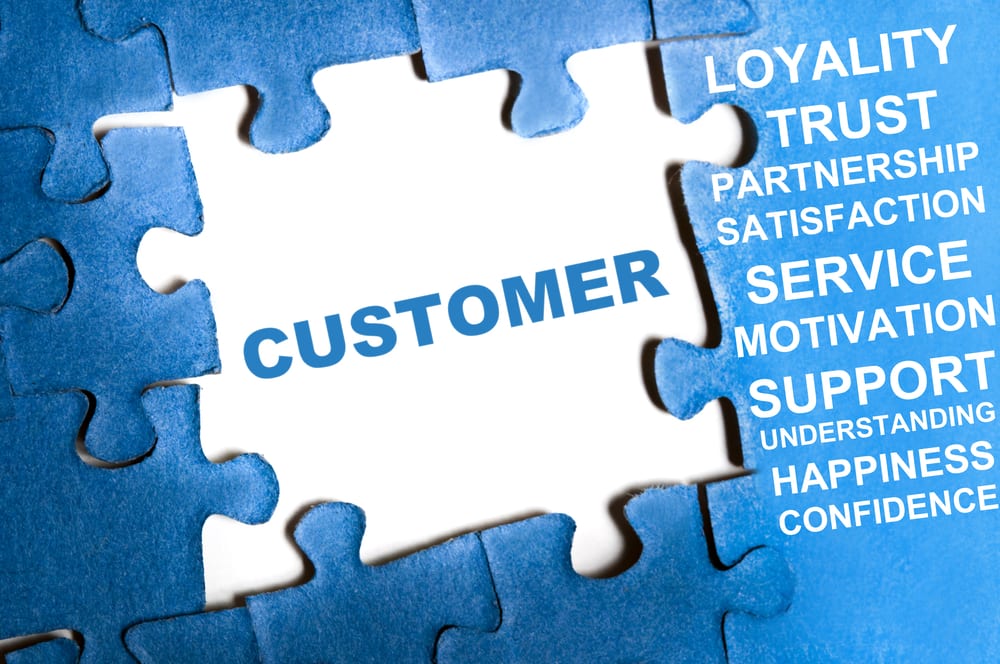You might think you check all the boxes. Your staff are presentable, friendly and approachable. Your products are unique and laid out neatly; your store has a distinctive character and an atmosphere that you won’t find on the high street and your prices are competitive. But is it enough?
If you’re greeting new customers daily but can’t recall welcoming back your regulars, you could be falling into the trap of satisfying customers in the short-term while missing out on their long-term business. Even large corporations fail to differentiate customer satisfaction and customer loyalty, which could lead to disastrous consequences.
Don’t just mind the gap, mend it!
- Customer satisfaction is a far more tactical concept to measure than customer loyalty. Customer satisfaction is the here and now it’s relatively easy to measure.
- You can stand back and watch the way your customers and staff are interacting, you can sense the excitement of new products in the store or the way people flock to something because it’s on offer.
- What’s more difficult is forecasting who’s going to come back and still be interested in those products when competitors start creating similar offerings at similar or even better prices.
Typically, right after a customer has completed an interaction such as a purchase or has a problem solved, they’ll be satisfied on a superficial level. You’ll have done your job and they’ll go away with a positive experience. But will they return? Consumers these days want, expect and deserve more. They are asking themselves ‘what have you done for me lately?’ instead of ‘that transaction went so well, I’m a customer for life’.
98% of your customers may be satisfied, but how many are loyal?
- Customer loyalty is much harder to earn than satisfaction, it means your customer will stick with you through thick and thin and will want to share that feeling with others.
- Customer loyalty derives not just from ‘good’ transactions but also from exceeding the customer’s expectations on a repeated basis. It’s about surprising them and keeping them guessing, on their toes. You catch them, tap into their emotional wants and needs and keep them coming back for more.
Of course, it’s important to measure and track customer satisfaction – it gives you the feedback that’s necessary to make adjustments in the short-term and develop your strategy for later success. But in the long-term, customer loyalty is what really matters. A loyal customer is worth recurring revenue, while a satisfied customer is worth maybe a staff’s pay packet for the day, if that.
Equally, it’s about knowing where your customers are. If your customers are tweeting at you, and you’re not monitoring those conversations, you’ve just lost a few points in the customer loyalty game. Anita Holley refers to the frustration of this multi-channel, multi-access world where customer loyalty hangs on so many individual channels of conversation that it’s more than just ‘good transactions’, it’s omnipotence!
How to achieve customer loyalty
- Let your customers know that you are interested in them as a long-term customer: This implies that your staff are very much geared to being problem solvers for the customers. They must understand that their jobs exist to solve customers’ problems and to assist the customer on demand
- Think in terms of developing relationships with the customer: This doesn’t mean a vendor-customer relationship. This means attempting to cultivate as many personal relationships as possible within the customer’s organisation. The quality of people you put in front of your customers will clearly help separate you from your competition. Your sales force must have very high expectations established for them in terms of relationship development
- Make every attempt to differentiate your product or service from the competition: Try to stay out in front in making your product or service more functional or beneficial to the customer. Does the customer perceive that your product or service is worth more to them than your competitors’ products or services?
- Serve the customer at extremely high levels: This means that your processes must be efficient, your people who have any interaction with customers must be highly trained in customer service skills and you must establish a culture with high expectations for serving the customers at very high levels. Nothing short of outstanding customer service can be expected with no exceptions granted
- Think long-term: Your business needs to establish a stable customer base. Companies that have a short-term mentality rarely, if ever, build much customer loyalty. Don’t go for the quick sale just to generate revenue. Build a strong relationship with the customer and sales will follow
- Allow customers to provide you feedback easily and whenever they feel they need to do it: Encourage your customers to contact you with ideas, problems, and concerns or with a pat on the back that can be passed on to employees for a job well done
- Create an environment of high accountability, high performance, high morale and high productivity: Happy and productive employees will do a lot to build customer loyalty
- Be everywhere your customers are: Learn where they go to talk about you, learn the channels they want to talk to you through, and be there, constantly.
What would you add?
Did you like this article?

- Please share it with your network, we’d really appreciate it!
- Would you like to write for Tweak Your Biz? Or sign up for our RSS?
- An outstanding title can increase tweets, Facebook Likes, and visitor traffic by 50% or more. Generate great titles for your articles and blog posts with the Tweak Your Biz Title Generator.
Connect with Tweak Your Biz on: 


Images: ”Customer blue puzzle pieces assembled/Shutterstock.com“


